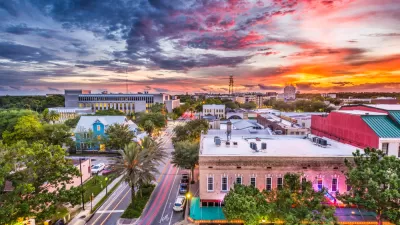Mayor de Blasio's goal of building or preserving 200,000 units of affordable housing over the next 10 years goes beyond what previous mayors have been able to achieve. How realistic are his chances of reaching this "lofty goal"?
After investing more than $5.3 billion in affordable housing, the Bloomberg administration saved or added 165,000 units over 12 years. Though Mayor de Blasio has made affordable housing production a centerpiece of his agenda, cuts in federal subsidy programs and other forces are likely to make the path to achieving his goal much more difficult.
"Jeff Levine, a developer who took advantage of the [Bloomberg era] rezonings to build and include affordable units, said of the 200,000-unit goal, 'It’d take an incredibly intelligent effort on the part of the public and private sectors.'”
"But affordable housing advocates say Mr. de Blasio comes to office with one critical advantage — his stated commitment to more-equitable housing policies," notes Mireya Navarro. By making affordable housing production mandatory under inclusionary zoning regulations, rather than optional, some believe de Blasio could spur the production of 25,000 to 50,000 affordable units.
"Under Mayor Bloomberg the idea was that all development is good, said Moses Gates, director of housing assistance for the Association for Neighborhood and Housing Development, an advocacy group. 'The shift we need to see to put a dent in our affordability crisis is, we want developers to build what the city needs, rather than just get stuff built.'”

Study: Maui’s Plan to Convert Vacation Rentals to Long-Term Housing Could Cause Nearly $1 Billion Economic Loss
The plan would reduce visitor accommodation by 25,% resulting in 1,900 jobs lost.

North Texas Transit Leaders Tout Benefits of TOD for Growing Region
At a summit focused on transit-oriented development, policymakers discussed how North Texas’ expanded light rail system can serve as a tool for economic growth.

Why Should We Subsidize Public Transportation?
Many public transit agencies face financial stress due to rising costs, declining fare revenue, and declining subsidies. Transit advocates must provide a strong business case for increasing public transit funding.

How to Make US Trains Faster
Changes to boarding platforms and a switch to electric trains could improve U.S. passenger rail service without the added cost of high-speed rail.

Columbia’s Revitalized ‘Loop’ Is a Hub for Local Entrepreneurs
A focus on small businesses is helping a commercial corridor in Columbia, Missouri thrive.

Invasive Insect Threatens Minnesota’s Ash Forests
The Emerald Ash Borer is a rapidly spreading invasive pest threatening Minnesota’s ash trees, and homeowners are encouraged to plant diverse replacement species, avoid moving ash firewood, and monitor for signs of infestation.
Urban Design for Planners 1: Software Tools
This six-course series explores essential urban design concepts using open source software and equips planners with the tools they need to participate fully in the urban design process.
Planning for Universal Design
Learn the tools for implementing Universal Design in planning regulations.
Ascent Environmental
Borough of Carlisle
Institute for Housing and Urban Development Studies (IHS)
City of Grandview
Harvard GSD Executive Education
Toledo-Lucas County Plan Commissions
Salt Lake City
NYU Wagner Graduate School of Public Service




























